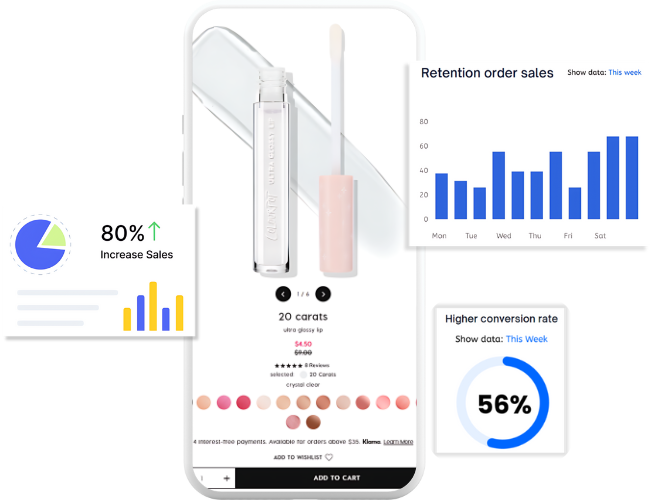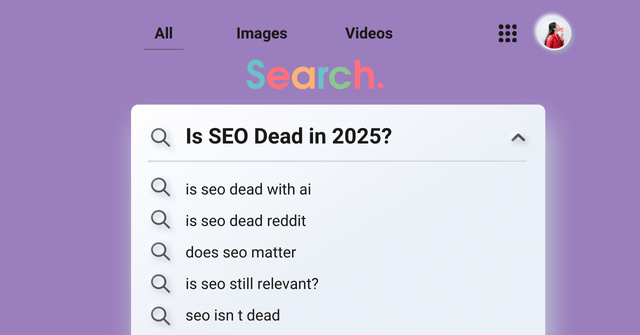What Is SEO?
“What is SEO?” has always been a burning question on everyone’s mind. SEO is a short form of search engine optimization. It refers to how businesses try to organically improve website SEO rankings in search engines like Google, Yahoo, and Bing. SEO involves various processes to develop content that will rank highly in search results.
It involves coming up with original, high-quality, and relevant content. The content must also include relevant bank links to related sites, which tell the search engines how important it is. You must build your website with the correct technical standards for an enhanced user experience. Thus, SEO is a concerted effort involving staff across the business organization.
What are the Key Elements of SEO?
SEO consists of several aspects that work as a whole to help your website rank highly. These aspects help the search engines read the content and decide how important it is to the topic. Search engines look for specific terms and check out the site’s organization for clues about the website’s value. The following elements of SEO meaning must go into an effective SEO strategy.
Keywords
You must talk about SEO and mention keywords. The term “keywords” refers to the terms you choose to write about to match the keywords the target audience uses to search for stuff online. They exist in the form of single words or phrases people use when searching for content online. When used correctly, keywords can connect brands with prospective customers.
It is not just enough to depend on keywords alone to rank. One should do a lot of research on the right keywords for SEO. Once you create a list of keywords, you must carefully pick a few and judiciously use them in your content. The best keywords are those with low competition and high search rates. Typically, this is SEO marketing.
Original Content Creation
There can be no SEO strategy without content. That’s because reaching and engaging audiences is only possible with relevant content. So, content is king. For example, if you sell tutorials online, you may want to put out content about the benefits of online courses, the cost of courses, how to choose a course, and so on. Individuals researching online courses turn to search engines, where your blogs rank at the top of the search results.
The content you put on a website must be original and published consistently on your website.
Local SEO
The undeniable increase in mobile device usage for online searches marks a significant trend. Reliable reports indicate that about 57 percent of online searches use smartphones and other mobile devices. Half of the users searching for services on mobile devices are seeking local options, underscoring the critical importance of local SEO for businesses.
SEO vs. SEM
SEO’s main focus is to make content rank highly in search results, enhancing visibility and traffic without direct payment. Search engine marketing increases visibility through paid advertising to drive traffic to your website.
Both aim to improve online presence but differ in approach and cost.
SEO (Search Engine Optimization)
- Focuses on optimizing organic visibility in search engine results.
- It involves content optimization, building backlinks, and doing keyword research.
- Generates traffic without direct payment but requires ongoing effort for sustainable results.
SEM (Search Engine Marketing)
- It uses paid advertising to increase traffic.
- Utilizes strategies like pay-per-click (PPC) advertising and display ads.
- Offers quick results but requires a budget for ad campaigns and ongoing management.
Why is SEO Important?
Search Engine Optimization, popularly referred to as SEO, is a technique of optimizing a blog or website to rank among the top in search engine results pages (SERP), which enhances the amount of free traffic the site receives.
SEO vs. PPC
Search engine optimization (SEO) and pay-per-click (PPC) advertising have clear advantages in increasing online visibility and driving traffic. SEO focuses on optimizing website content so that a website ranks highly in organic search results, resulting in long-term benefits and credibility. On the other hand, PPC gains immediate visibility through paid advertising, targeting specific audiences accurately and quickly.
SEO lays the foundation for stable, organic expansion, providing a solid foundation from which to grow your online business over time. Paid advertising, on the other hand, can instantly boost performance, delivering results you can see and measure immediately. When combining these two approaches, you strike the perfect balance between pursuing quick results and nurturing long-term growth. This fusion not only expands your online footprint but also ensures you’re hitting all the right notes in the digital marketing symphony.
Types of SEO
There are various methods of using SEO to influence qualified traffic to your site, and these include:
Off-Page SEO
This technique guides you to focus more on the “off the page” activities to optimize your blog or website. You might be curious about the external activity impacting your search engine performance. These are the backlinks and inbound links. The number of websites linking to your site and the authority of those sites determine how high or low your site ranks.
On-Page SEO
With this kind of SEO, your attention is drawn more to the content “on the page”. It involves researching for keywords or questions that are frequently searched. By giving solutions to these questions, you automatically improve your SERP ranking.
Technical SEO
On the other hand, it involves the processes on the backend of your website and page coding. These processes include CSS file optimization, structured data, and image compression. All these processes help to enhance your site’s loading speed.
How Does Search Engine Work?
Search engines are the backbone of the internet, serving as the primary gateway for users to find information, products, services, and more. Do you know how search engines work? In this section, we’ll look into the intricate mechanisms of SEO websites, unraveling the processes that enable them to deliver relevant and timely results to users worldwide.
SEO provides the best way to communicate with the search engine algorithms. SEO optimization ensures that your articles are way clearer to the spiders on the search engines. Through your keywords, you make the relevance of your search engines clear. If you consistently rank highly in the top results, customers will begin to see you as an industry leader. This is because your customers see you as a trusted source when it comes to the answers they are seeking.
Indexing and Crawling
At the heart of every search engine lies a vast web of interconnected information, constantly growing and evolving. Search engines have specialized bots called spiders or crawlers. These automated bots traverse the internet, systematically exploring websites and gathering data on their content, structure, and links.
Ranking Algorithms:
Once the crawlers have done their work, it is up to search engines to determine how to rank the websites. This is done through ascertaining how important each web page is to users. This is where ranking is important. There is an algorithm that deals with exactly this. These complex mathematical formulas analyze various factors to evaluate the quality and relevance of web pages.
An example of a ranking algorithm is PageRank by Google, which looks at how important a web page is. This is often done by looking at the quality of links that point to it. In addition to link analysis, modern search engines consider a myriad of other factors, including keyword relevance, content quality, and website performance.
Working on your Shopify SEO helps improve your Shopify’s site ranking in search engine results.
Why Does SEO Focus On Google?
Google has dominated the search engine market for some time now, holding a significant share of search traffic. This has resulted in Google holding a huge sway when it comes to SEO efforts, as it is vastly used. Some of the other reasons for this include:
Algorithm Complexity
Google’s search algorithm is always being updated, making it more robust and able to keep up with the changing world.
User Behaviour
Its dominance has let users trust the brand, which makes it a market force in SEO. This makes SEO efforts aimed at Google have more traction.
How Does SEO Work?
Having an in-depth knowledge of how SEO works is very important for businesses seeking to have a competitive edge. Let’s look into the intricacies of how SEO works, and offer actionable insights to propel your website to the top of the rankings.
The Mechanism of SEO
At the heart of SEO lies an understanding of how search engines work. Search engines use complex algorithms that search the internet and index web pages. These algorithms are updated regularly to provide the most relevant information to users. As the user searches for a specific word or keywords, the algorithm crawls the internet and delivers the most relevant information based on the keywords. It is, therefore, important to stay in the know when it comes to algorithm changes, as they are updated occasionally.
Building Keywords
Keywords serve as the foundation of SEO, acting as the bridge between user queries and web content. SEO strategists have perfected the use of keywords to identify words and phrases that align with what the user has in mind when searching for particular information. Integrating these keywords strategically into website content, tags, and URLs enhances the site’s visibility for relevant searches.
User-Centric Content
It involves having content that is well-optimized for SEO. This is done by optimizing headers, meta tags, and images, and improving readability. By making content with the end user in mind, you can align their intent with the type of content you create. This will improve your website’s ranking. This is a crucial aspect of how SEO works, as it determines the ranking of your content. Your content has to be relevant and well-optimized for it to rank highly.
When it comes to SEO, good content provides the best results. Informative content keeps users on your site, making them interact with your content and share it with others. This boosts your site in search engine results.
Use of Backlinks
Backlinks refer to links that point to your site from different websites. Having different links pointing to your site often indicates that others trust you as an authority in the subject matter; hence, search engines can rank you higher.
Backlinks are the main building blocks of how SEO works. Acquiring quality backlinks through reaching out to other sites, blogging, and partnerships can help get you more traffic.
Ensuring Easy Site Navigation
This focuses on improving a website’s infrastructure and performance to enhance crawling, indexing, and user experience. Improving your site navigation is done by fixing broken links, ensuring responsiveness on mobile, and optimizing site speed. By addressing technical issues, websites can provide a seamless browsing experience for users and signal their relevance to search engines. Seo consists of a myriad of things that enable you to rank highly.
Optimizing User Experience
User experience plays a vital role in SEO, influencing factors such as bounce rate and click-through rate. A positive user experience contributes to higher search rankings and organic traffic. As the user experience improves, so does your ranking, as search engines can refer more people to your site due to its ease of use.
Employing Analytics
Analytics helps to evaluate the effectiveness of any SEO strategy, thus allowing you to make informed decisions.
Technology Trends and Algorithm Updates
As technology advances and user behaviors evolve, the SEO landscape continues to transform. New technology trends have helped businesses improve their user experience. Technology such as artificial intelligence and voice search is proving to be quite a game changer.
Adapting to algorithm updates and embracing innovative strategies will be paramount in shaping the future of SEO. As part of new technology trends, search engines have adapted the following:
Leveraging on AI
Search engines are increasingly leveraging AI and machine learning algorithms to deliver personalized search results and improve the user experience. Understanding how AI impacts search algorithms and utilizing AI-driven tools for content optimization and performance analysis will be essential for staying ahead in SEO.
Visual Search
Visual search technology is a crucial part of SEO, as it makes searches quite convenient. A user can be able to search for information using images. Optimizing images with descriptive file names and structured data markup can enhance visibility in visual search results, opening up new opportunities for driving traffic and engagement.
Mobile-First Indexing
Search engines often prioritize mobile devices, as they offer a significant amount of traffic when it comes to devices exploring the internet. This tends to rank mobile-friendly websites higher. Optimizing for mobile responsiveness, page speed, and usability will be paramount for maintaining SEO competitiveness.
Video and Interactive Content
Video consumption over the internet has grown significantly over the years. This growth has seen a rise in the need to optimize video content. Optimizing video titles and descriptions and creating interactive and engaging video experiences can enhance visibility in video search results and drive organic traffic.
Zero Click Searches
Zero-click searches refer to a means of getting information from a search engine without clicking through a website. This is becoming increasingly common. Optimizing for featured snippets and other rich results can help websites capture visibility and attract traffic, even without traditional click-throughs.
Expertise, Authoritativeness, and Trustworthiness (EAT)
Search engines are placing increasing emphasis on the E.A.T of web content, particularly for topics related to health, finance, and other sensitive areas. Establishing trustworthiness through high-quality content and backlinks will be essential for ranking well.
By understanding the mechanics of search engines and prioritizing user experience and engagement, businesses can unlock the full potential of SEO to achieve their online objectives. As the digital sphere continues to grow, embracing SEO as a part of digital marketing will put businesses in a commanding position. This will always result in long-term success.
Get Started With SEO
To start on your SEO journey, start by conducting thorough keyword research to identify relevant phrases for your website. Optimize your website’s structure to improve visibility and relevance to search engines. Regularly monitor your site’s performance using analytics tools and adjust your strategy accordingly. Always keep up to date on SEO trends to enable you to refine your approach over time. Remember, SEO is a continuous process that requires patience, persistence, and strategic planning to achieve lasting results.
If you have a Shopify store, try our SEOAnt booster to elevate the site’s performance and visibility on Google search results.
FAQs
Note: This blog was originally written in English and translated using an automated tool to make the content accessible to a global audience. We believe in sharing valuable insights with everyone and apologize for any inaccuracies. If you spot any errors, please feel free to contact us for corrections. Your feedback helps us improve and ensures the content’s value is fully realized.






